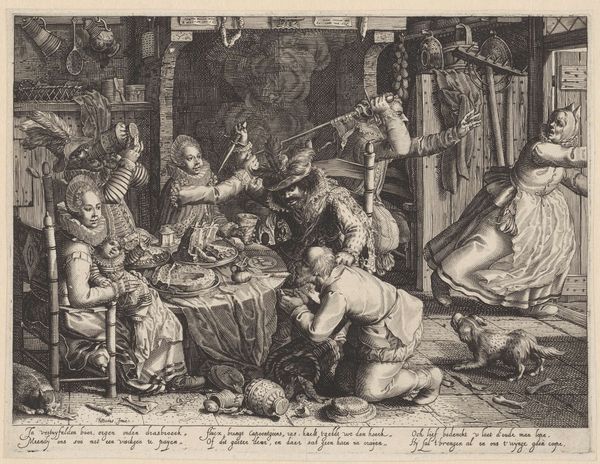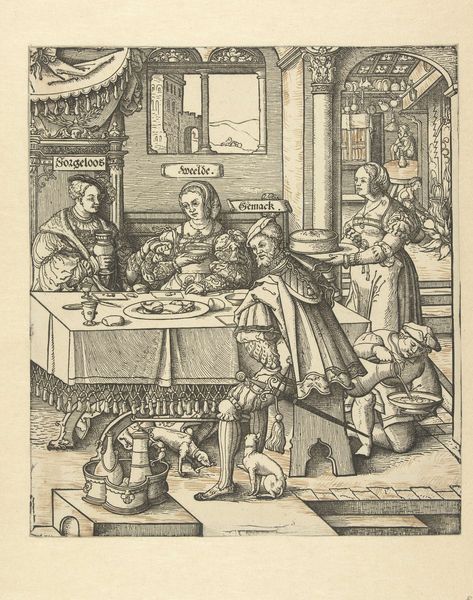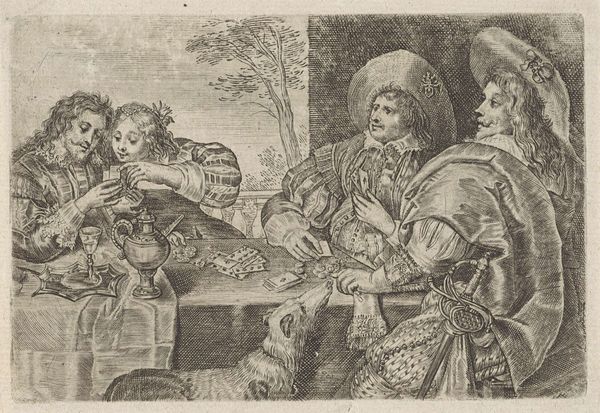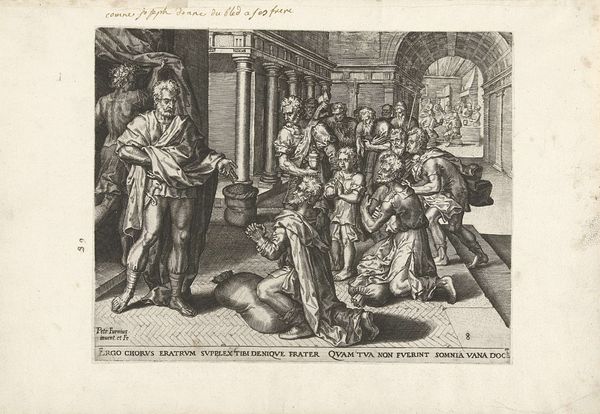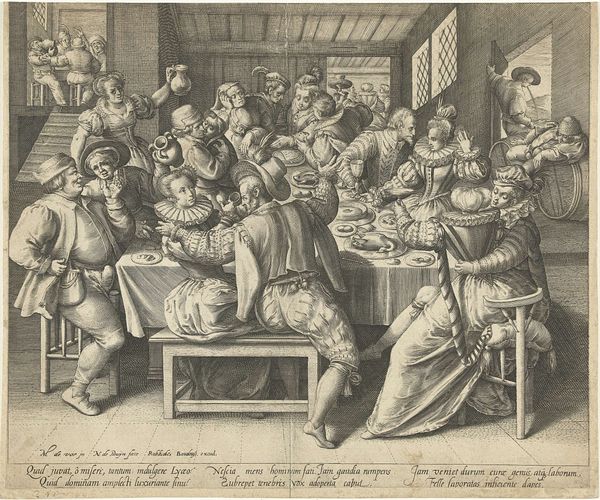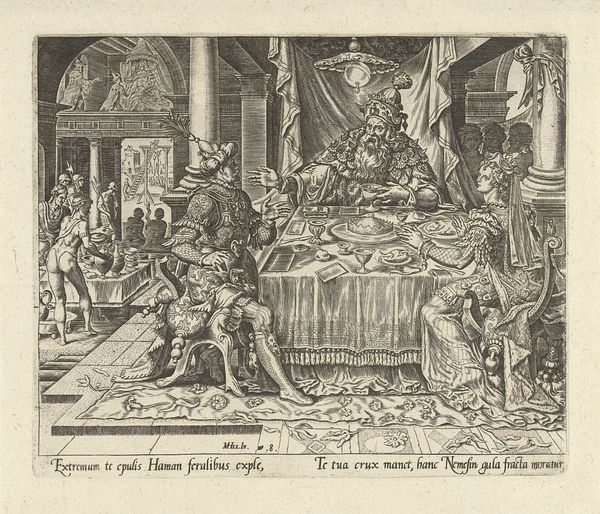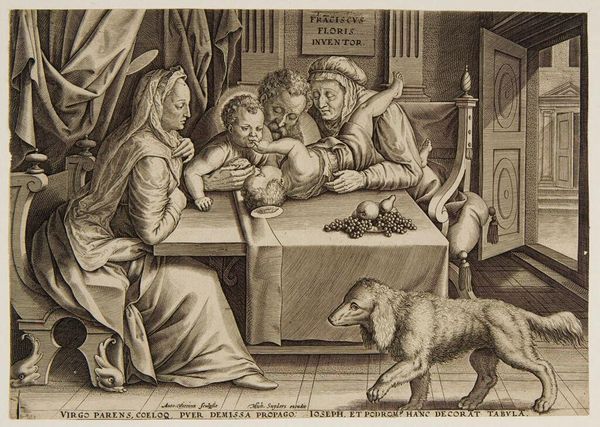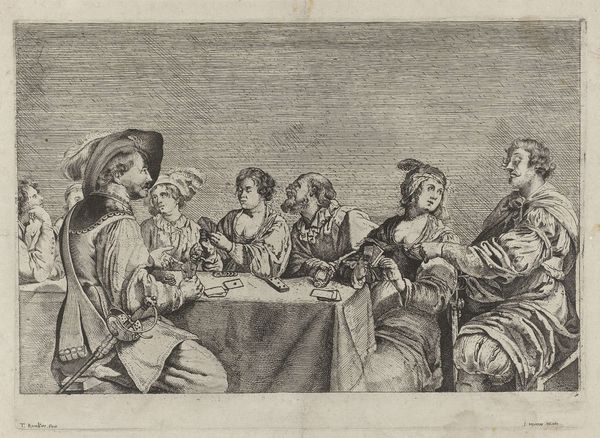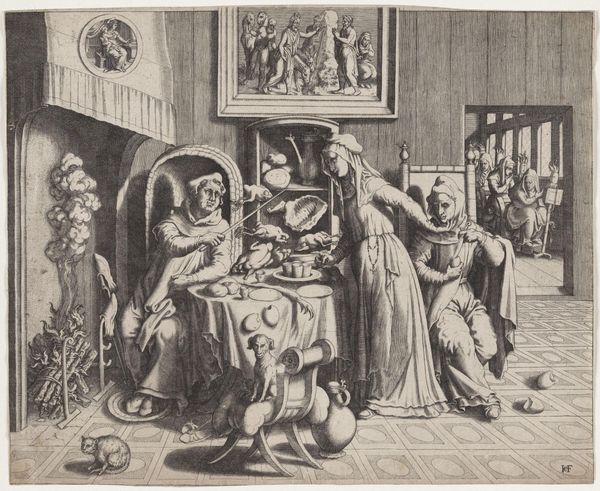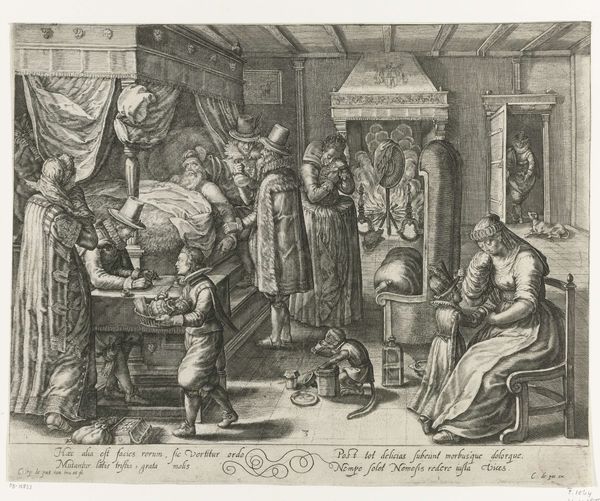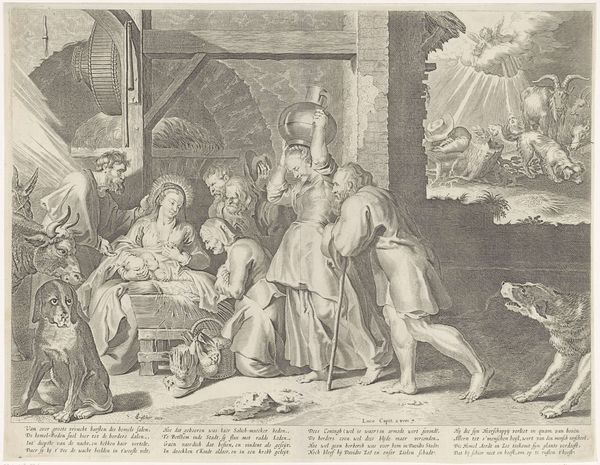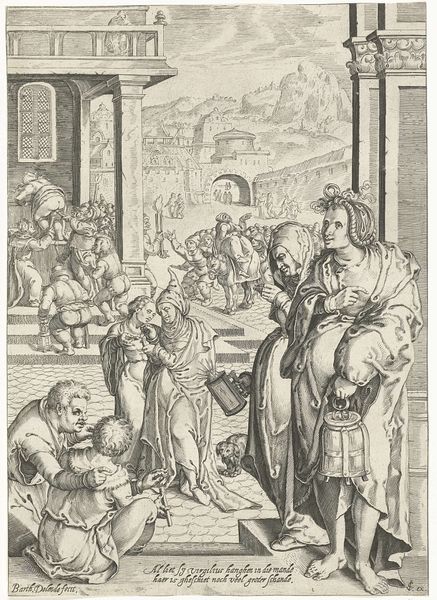
engraving
#
portrait
#
baroque
#
genre-painting
#
history-painting
#
engraving
Dimensions: height 344 mm, width 416 mm
Copyright: Rijks Museum: Open Domain
This engraving, "Card-Players," by Alexander Voet the Elder, made in the 17th century, plunges us into the shadowy world of games of chance. Here, cards, symbols of fate, are dealt with an intensity that speaks to deeper human desires. The central motif of the card game connects to a long tradition. One sees echoes in ancient Roman dice games depicted in Pompeian frescoes, and medieval woodcuts showing fortune tellers predicting the future. In each, gambling is not mere entertainment, but rather a ritualistic engagement with destiny. Even today, the roll of dice or shuffle of a deck can stir primal anxieties. Are we masters of our fate or puppets of fortune? The psychological power of this image lies in its evocation of risk and potential loss. We are drawn to the table, subconsciously reliving our own moments of precariousness, whether financial or emotional. The game becomes a mirror reflecting our deepest insecurities, our hopes and fears laid bare in the fall of a card. And so, like recurring dreams, the symbols of gambling resurface, evolving to reflect the anxieties of each age. They remind us that while the rules of the game may change, the stakes—life, love, and fortune—remain eternally compelling.
Comments
rijksmuseum about 2 years ago
⋮
Two elegantly attired gentlemen are waiting for the couple to take their turn. The man ‘shows his hand’ to the woman. In the 17th century, gambling was considered a sign of greed or avarice, one of the seven cardinal sins. The inscription cautions that gaming, women and wine will soon lead to an inglorious end. Even the dog seems to sniff disaster.
Join the conversation
Join millions of artists and users on Artera today and experience the ultimate creative platform.
